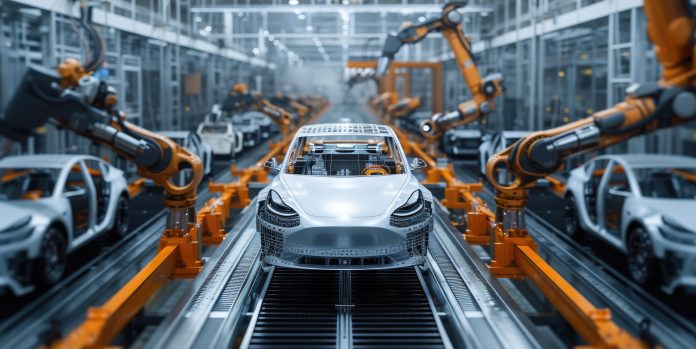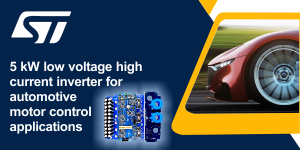India’s EV manufacturing sector is currently on an upward trajectory because of policy support, increasing demand, and investments. Historically considered a niche segment in vehicle sales, an automotive molding into production scenario is slowly rolling in real-time, with forecasts having India positioned amongst the top global EV producers by 2030. The presence of major Indian OEMs like Tata, MG, and Mahindra and new entrants like VinFast marks the beginning of the shaping of the EV ecosystem in India localization, infrastructure, and supply chain issues notwithstanding.
EV Market & Manufacturing Scale:
Modest Current Shares: Passenger electric vehicle (EV) sales in India reached approximately 106,000 units in FY 2024–25, accounting for a modest 2.5% of total passenger vehicle sales. In contrast, overall EV registrations, including two- and three-wheelers, surged to around 1.96 million units, reflecting a robust 17% year-on-year growth.
Passenger EVs Uptake: Passenger EV sales have grown from some 91,000 in FY 2023 to 106,000 in FY 2025. EV sales share was recorded highest at around 4% during May 2025, illustrating an accelerating rate of adoption whilst penetrations still remain low.
Expected Growth Along with Time: According to S&P Global, production of Indian EVs is expected to grow from about 125,500 units in 2024 to approximately 1.33 million units by 2030. On the other hand, the Rhodium Group forecasts a manufacturing capacity for electric four-wheelers reaching 2.5 million units/year by 2030, up from around 200,000, thus making India the fourth-largest electric car producer in the world at that time.
Export Opportunity: Expansion could create an excess capacity of 1.1-2.1 million units above the domestic demand, potentially making India an exporter of EVs if manufacturing costs and quality reach global competitiveness standards.
Growth in Indian EV Sales and Production:
| Year | EV Sales (Units) | Market Share (%) | EV Production
(Estimated) |
| FY 2023 | 91,000 | 1.3% | 95,000 |
| FY 2024 | 106,000 | 2.5% | 125,500 |
| May 2025 | — | 4.0% | |
| FY 2030 | — | 10–15% (est.) | 1.33M – 2.5M |
Key Players:
Tata Motors is the frontrunner in India’s e-vehicle business. In FY 2024, the EV division achieved sales of nearly 73,833 vehicles, indicating an upward growth of almost 48% YOY, thus contributing somewhat 13% of the total volumes. Tata plans to invest somewhere between ₹16,000–18,000 crores by FY 2030 with 10 EV models to be launched so that the EV volumes will account for somewhere near 30% of the total sales. In June 2025, Tata launched the Harrier EV, a 65–75 kWh LFP-battery SUV with an estimated range of 627 km; bookings commenced in July 2025.
Fast-track growth by MG Motor India (JSW MG). It presently holds some 30% of the EV market (May 2025), the market growing at some 147% YOY, ZS EV and Comet being the major boosters. In July 2025, MG introduced the MG M9, a premium electric MPV under the MG Select brand, from ₹69.9 lakh; deliveries commenced in August 2025.
Mahindra & Mahindra sees exponential growth in its emerging EV sphere. The May 2025 sales of EV recorded a 338% YOY increase to take a market share of about 21%, under the leadership of XUV400 and Born Electric series such as BE 6, XEV 9e.
New entrant: VinFast. The Vietnamese-based EV company is setting up a 150,000-unit-a-year plant at Thoothukudi, Tamil Nadu, with operations scheduled for commencement in June 2025.
Leading EV Manufacturers in India (2025):
| Company | Market Share (May 2025) | Popular EV Models | Sales FY 2024 |
| Tata Motors | 35% | Nexon EV, Harrier EV | 73,833 |
| MG Motor | 30% | ZS EV, Comet, MG M9 | — |
| Mahindra & Mahindra | 21% | XUV400, BE 6, XEV 9e | — |
Policy & Infrastructure Enablers:
Duty cuts and import incentives: In a newly finalized EV policy (June 2025), import duties were reduced from 70% to 15% for CKD EV imports, but only for those companies that would be investing a minimum of US$ 486 million for local manufacturing within three years. Domestic content thresholds apply. This move is expected to lure foreign OEMs like Mercedes-Benz and Volkswagen, should Tesla continue showing no interest in local production.
Production Linked Incentives: Across automotive EV, ACC (Advanced battery), and FAME schemes, the total PLI programs come to an estimated ₹1.97 lakh crore. However, to the end of in March of 2025, only around $1.7 billion had been disbursed-largely due to delays and bureaucratic hurdles. Revisions are in pipelining to encourage uptake.
Demand-side incentive schemes: FAME II (Phase II) budgeted approximately $693 million for promoting EV adoption-attributed nearly 1.34 million vehicles by late 2023, including buses, cars, three- and two-wheelers. Based on that, the wider Electric Mobility Promotion Scheme (EMPS 2024) was extended and revised to fund approximately ₹778 crore for about 560K vehicles, largely for two- and three-wheelers, through September 2024.
Charging Infrastructure Push: The proposed PM E-DRIVE scheme shall see the installation of 22,100 fast chargers.
Local Ecosystems and OEM Groups:
Tamil Nadu is fast emerging as an EV manufacturing ecosystem home to Tata, Mahindra R&D at Mahindra Research Valley, VinFast plant (upcoming), and their supplier network.
Uttar Pradesh leads the country in EV registrations due to e-rickshaw usage all over the state. Proposed by the state government, the EV manufacturing policy envisages an investment of ₹30,000 crores and employment to the tune of 1 million, with aggressive development of charging infrastructure.
Odisha and Maharashtra will also rise in prominence: JSW Group is setting up a large EV & battery manufacturing complex in Odisha and in for assembling cars and commercial vehicles under MG-JSW JV, which aims at producing 1 million EVs by 2030.
Challenges:
Raw material and component supply shocks: Some vulnerabilities have come into view-likey rare-earth magnet shortages occasioned by Export of China. These might weigh down on production. Bajaj Auto is looking at zero EV output by August 2025, and Maruti Suzuki has slashed a two-third chunk off its production target for the e-Vitara in H1 FY 2026 due to such constraints.
Slow execution of schemes: Indicative delays in disbursements under the PLI and state-level EV incentive schemes have taken away the certainty from expansion planning.
Localization gaps: India has not yet internalized strategic stages of battery manufacturing, still depending on imports for strategic raw materials and high-tech components such as BMS, cells, and control units, thereby limiting cost competitiveness and exposing their firms to global supply shocks.
Demand lag persists: Consumer take-up remains wary. Despite incentives and new models, infrastructure gaps, range anxiety, and upfront costs still undermine adoption-creating a classic dilemma of charging availability versus customer confidence.
Outlook: Strategic Implications & Opportunities:
Launching new models by Tata, Maruti, Mahindra, Hyundai, Kia, and MG in 2025 gives fresh impetus to the Indian EV sector: wide selections and better prices. This momentum could move passenger EV adoption to 10% fairly soon. On a secured note, development of India’s battery ecosystem must be quick, going beyond just the assembly of cells into sourcing of materials, recycling, skilled workforce training, and mineral supply agreements.
The policy on PLI and FAME incentives should be more clearly executed, approvals should be simplified, and support for long-term demand must be considered. Supply chain resilience shall be equally crucial: in this instance, the aim would be to reducing dependence on China for magnets and equipment from a disruption perspective. Also, Indian manufacturers must scale-up at competitive costs with quality and global, supporting networks to be an exporter in EV globally.
Conclusion:
EV manufacturing in India is growing fast, energized by vehicle assembly, battery capacity announcements, and corresponding incentives. The domestic champions Tata, MG, and Mahindra are advancing aggressively while the new kids VinFast are erecting possibly the largest plants ever. Yet imports remain high for critical battery components and rare-earth materials, leading to vulnerabilities.
India clearly wants to emerge as a global EV and battery hub by 2030 with a production capacity projected to grow tenfold and maybe having a surplus of exports. In realizing this vision, therefore, India must fast-track localization, infrastructure build-out, supply chain robustness, and policy delivery. The choice phase for the next couple of years-albeit really 2025-will determine how well India can carve out a resilient and globally competitive EV ecosystem.








